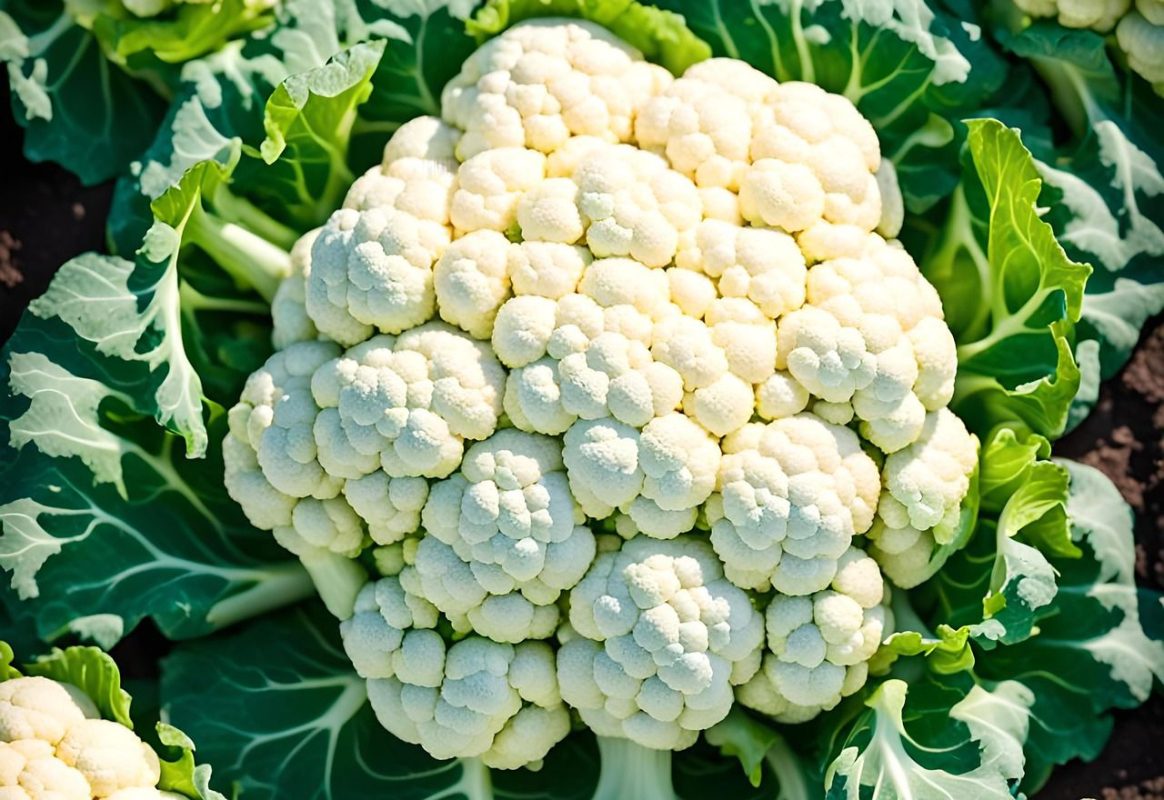Cauliflower is one of the most rewarding winter vegetables — crisp, nutrient-rich, and ideal for cool climates. But growing it successfully from seedlings requires precision and care. Here’s your step-by-step guide.
🧑🌾 1. Choose the Right Variety
Winter cauliflower thrives in cooler temperatures (10–20°C). Select early or mid-season varieties that handle mild frost well.
Recommended varieties:
- Snowball
- Pusa Snowball K-1
- White Corona
- Hybrid 60 days (for faster harvest)
🌱 2. Seed Sowing Time
For winter planting, sow seeds from late September to early November depending on your region’s climate.
- Nursery beds or trays are ideal for initial growth.
- Germination occurs best between 18–22°C.
🪴 3. Nursery Preparation
Use a well-drained, fertile medium:
- 1 part garden soil
- 1 part compost or organic manure
- 1 part sand
Keep the nursery moist but not soggy.
Cover seeds lightly (0.5 cm depth) and use shade nets to protect from direct sun and rain.
🌤️ 4. Transplanting Seedlings
After 4–5 weeks or when seedlings have 4–5 true leaves, transplant them into the main field.
Spacing:
- 45 cm between plants
- 60 cm between rows
Harden seedlings by exposing them to sunlight for a few hours daily before transplanting.
🌾 5. Soil & Bed Preparation
Cauliflower prefers loamy soil rich in organic matter with pH between 6.0–7.5.
- Mix in well-rotted compost (4–5 kg/m²).
- Apply balanced NPK fertilizer (10:10:10) before planting.
Ensure good drainage — standing water can cause root rot.
💧 6. Watering & Care
- Keep soil consistently moist, especially during head formation.
- Avoid overwatering — soggy soil invites disease.
- Mulch around plants to retain moisture and suppress weeds.
🐛 7. Pest & Disease Management
Common issues include:
- Aphids, cabbage worms, and flea beetles: Use neem oil spray weekly.
- Downy mildew or black rot: Ensure airflow and use organic fungicide if needed.
🌸 8. Blanching the Head
When the white head starts forming, tie the outer leaves over it.
This protects it from sunlight and keeps it white and tender — the hallmark of a good cauliflower.

🧺 9. Harvesting
- Harvest 70–90 days after transplanting.
- Cut the head when it’s firm, white, and compact — before it starts separating.
Use a sharp knife and leave a few outer leaves for protection.
🌍 EcoBird Tip:
Compost cauliflower waste (leaves, stems) back into your garden soil. It enriches the ecosystem and supports your next cycle of eco-friendly growth.





